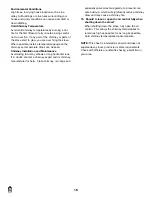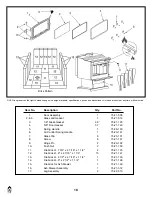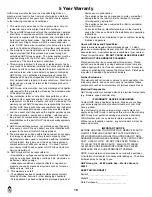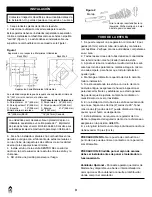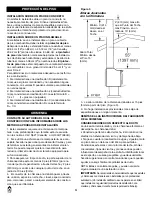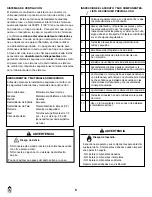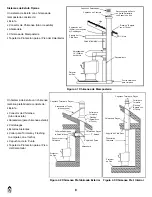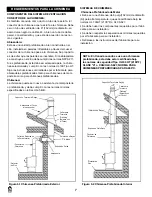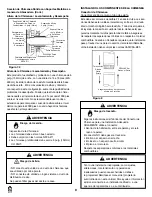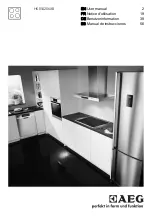
15
g) Once the kindling has started to burn, start by
adding some of your smaller pieces of seasoned (dry)
firewood. NOTE: Adding large pieces at the early
stages will only serve to smother the fire. Continue
adding small pieces of seasoned (dry) firewood,
keeping the door slightly open until each piece starts
to ignite. Remember to always open the door slowly
between placing wood into the fire.
h) Once the wood has started to ignite and the smoke
has reduced, close the wood stove door fully. The
reduction of smoke, is a good indication that the draft
in the chimney has started and good combustion is
now possible. Larger pieces of seasoned (dry) fire
wood can now be added when there is sufficient
space in the Firebox. Adjust the air control setting to
desired setting.
I) Note: The lower the air control setting the longer the
burn time of your firewood.
2. What type of wood is best to use as Firewood?
Dry seasoned hardwood should be used. Avoid
green unseasoned wood. Green wood, besides
burning at only 60 percent of the fuel value of dry
seasoned wood, will deposit creosote on the inside of
your stove and along the inside of your chimney.
3. What does dry seasoned wood mean, and what is
considered hardwood?
Wood that has been dried for a period of one year in
a well-ventilated and sheltered area would be considered
dry seasoned wood. Hardwoods are generally from
slow growth trees (Example: Oak and Fir). Softwoods
are generally from fast growth trees. (Example: Pine
and Spruce)
4. Will following the above listed steps for starting a
fire result in perfect results all the time?
The quick answer is most of the time. There are
many variables that may affect your success rate
when staring a fire. Most of those variables and how
to deal with them will be learned through experience.
Your ability to start a good fire will significantly
increase with time and patience. Some of the reasons
for poor stove performance will be covered in the
next section of these instructions.
5. Why can’t I get the fire lit?
Damp or wet wood and poor draft are the main
reasons for poor results in starting a fire. Always use
dry seasoned wood for your fire. Even wood dried for
two years will be difficult to ignite, if it has become wet.
6. Why is there always a large quantity of thick black
smoke present in the firebox?
A large quantity of thick black smoke in the firebox, is
a good indication that the draft is poor.
7. Is it normal for soot to cover the glass at the
beginning of a fire?
Your stove has been built with an air wash system
that will help keep the glass clear when the firebox
has reached a good operating temperature, and has a
good draft. Cold firebox temperature and poor draft
cause sooting of the glass. Once the firebox tempera
ture and the draft increases, the soot will burn off.
8. What is draft?
Draft is the ability of the chimney to exhaust draw by-
products produced during the normal combustion
process.
9. What can cause a poor draft?
The most common factors for poor draft are:
a) Atmospheric pressure and air supply
b) Environmental conditions
c) Cold chimney temperature
d) Poor chimney installation and maintenancea)
Atmospheric Pressure and Air Supply
Atmospheric pressure affecting the draft from a
chimney can be either outside the home, inside the
home or both. Outside the home, a high-pressure
day (clear and cool) generally creates a better draft in
the chimney than a low-pressure day (overcast and
damp). Inside the home, normal household appliances,
such as clothes dryers and forced air furnaces compete
for air resulting in inadequate amounts of air available
to fuel a fire and create a condition known as negative
pressure. Under extreme conditions of negative
pressure the combustion by-products can be drawn
from the chimney and into the house. This
condition is commonly referred to as down drafting.
There are several factors that impact the amount of
air available in the home. Increased amounts of
insulation vinyl windows, extra caulking in various
places and door seals can all keep heat in but may
also make a home too airtight. If you are in doubt
about whether or not there is sufficient air in your
home for your stove, refrain from using those
appliances known to consume the air where possible,
or open a window or door to allow air to enter the
home.
















